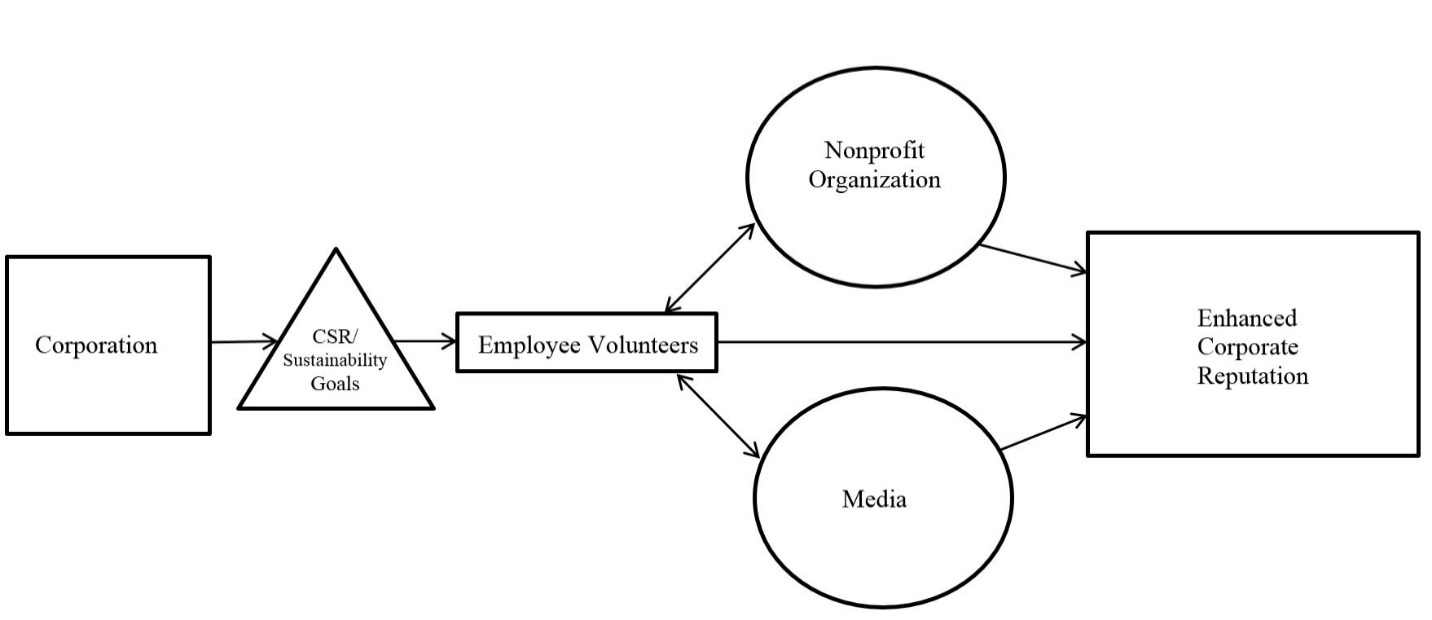
Employee volunteer programs supporting corporate social responsibility/sustainability (CSR/S) goals demonstrate authentic commitment and provide a platform for other benefits, as well. Organizations may involve employees as community caretakers and loan executives to nonprofits. CSR/S-linked volunteer programs have the potential to attract and retain employees and to enhance their job satisfaction. Moreover, corporations gain positive publicity when news and social media promote highly visual, branded community service performed by staff wearing colour-coordinated, company-logoed T-shirts and caps. Combined, this win-win-win provides a solid business case argument for employee volunteer programs. Right?
Maybe. An ethical quagmire awaits corporations who slip into volunteerism’s dark side. However, as event organizer, employee recruiter, and CSR/S program evaluator, the public relations manager is perfectly positioned to ensure staff volunteer abuses never materialize. Even a taint of coercion, especially if volunteer projects are scheduled after work or weekends when people must take time from home-life commitments, contradicts the CSR/S spirit. For volunteer programs that are not on the clock, it is highly likely that female employees could feel abused since most work two shifts – paid work for organizations and non-paid work at home. Enabling staff to volunteer on company time demonstrates authentic CSR/S commitment. Some employees simply believe that volunteering is a private matter and/or may not embrace their employer’s pet cause on moral grounds. Moreover, those who are left to hold down the fort while co-workers perform volunteer activities may feel pressured to step up their performance.
Many other strains can accompany corporate volunteerism. Employees under union contracts who feel forced into volunteering may find an ally in their labour union. Recruiting too hard among employees through repetitive messaging can prove irritating. As team players, some go along with a volunteer program in hopes of a positive performance review, transfer, or a promotion with greater rewards. Should such results fail to materialize, expectancies are violated, and employees are left to ponder whether their time investment really was worth it. Forcing employees to do something they may resist could result in social media backlash, with employees using uncontrolled media to speak out against companies in real-time.
Yet, many positive outcomes await well-managed employee volunteer projects in the service of corporate social responsibility/sustainability. About 62.6 million people in the U.S. volunteered through or for an organization at least once, spending a median of 52 hours on volunteer activities during the September 2014 to September 2015 period. In Canada, corporate volunteerism program growth corresponds with decreased government support traditionally given to non-profit service organizations and initiatives. Global comparison/contrast of volunteerism offers a window on this growing trend. As illustrated here, synergies enable corporations to enhance reputation through employee volunteerism in support of CSR/S goals.

Overall, corporate staff have much to gain through engagement with well-managed CSR/S volunteer programs. Religion, politics, and economics are primary factors used to explain reasons for volunteering – based on altruism and status and material rewards. In my 2013 study, I found eight distinct roles volunteering enables employees to exact: ambassador/foot soldier, community organizer, companion/ally, fundraiser, global citizen, networker/team-worker, student and teacher, and Santa Claus.
Employees shared stories about volunteering to build houses for the homeless, spend time with children battling cancer, landscape impoverished neighbourhoods, assemble back-to-school kits for children and personal care kits for military members, and launch neighbourhood recycling campaigns. When staff bond through volunteer activities, they prove their loyalty to one another, engage in cross-training, and feel good about their work. Several had offered news media interviews and used social media to Tweet and post Facebook photos of their co-workers knee-deep in mud cleaning waterways or helping those less fortunate in the community by serving warm meals in soup kitchens.
Benefits of serving one’s organization through community volunteer activities in order to refine or to acquire new skills are documented in my book. For example, some employee volunteers engaged with specific activities to learn about budgeting, project management, communication, negotiation, people management, time management, negotiation, networking and teamwork.
Public relations managers have a role to play beyond generating publicity. They have an ethical responsibility to serve as insider-activists and guardians of CSR/S programs to avoid potential for disrespect or abuse of employees in conjunction with company volunteer programs.
♣♣♣
Notes:
- This article is based on the author’s book, Corporate Social Responsibility, Sustainability, and Public Relations: Negotiating Multiple Complex Challenges (2015, Routledge), winner of the 2015 PRIDE Book Award from the National Communication Association – as well as her chapter, “Volunteerism and corporate social responsibility: Definitions, measurement, roles, & commitment,” published in Volunteering and communication: Studies from multiple contexts (2013, Peter Lang Publishers).
- The post gives the views of its author, not the position of LSE Business Review or the London School of Economics.
- Featured image credit:Salvation Army USA West CC-BY-2.0
- Before commenting, please read our Comment Policy
 Donnalyn Pompper (Ph.D., APR) is a Professor in the Department of Strategic Communication, School of Media & Communication at Temple University in Philadelphia. She teaches and researches about power and ethics as they play out in organizations and in media representations.
Donnalyn Pompper (Ph.D., APR) is a Professor in the Department of Strategic Communication, School of Media & Communication at Temple University in Philadelphia. She teaches and researches about power and ethics as they play out in organizations and in media representations.

